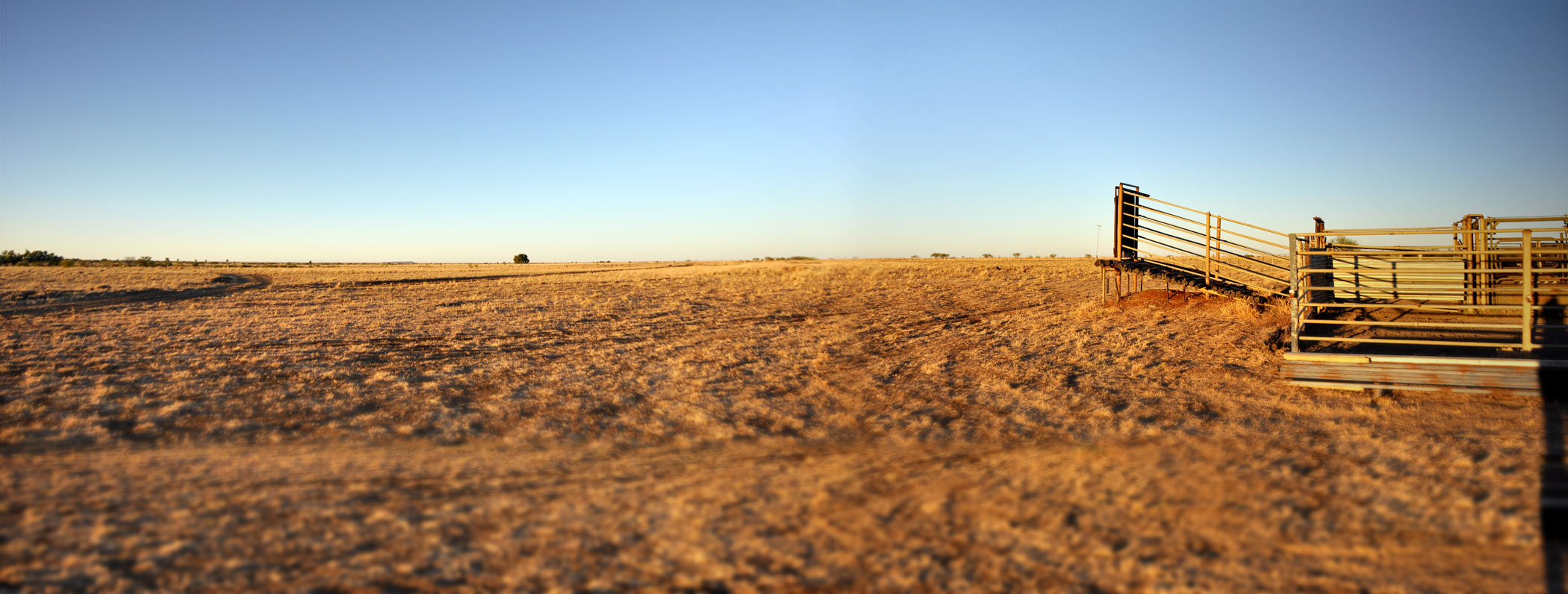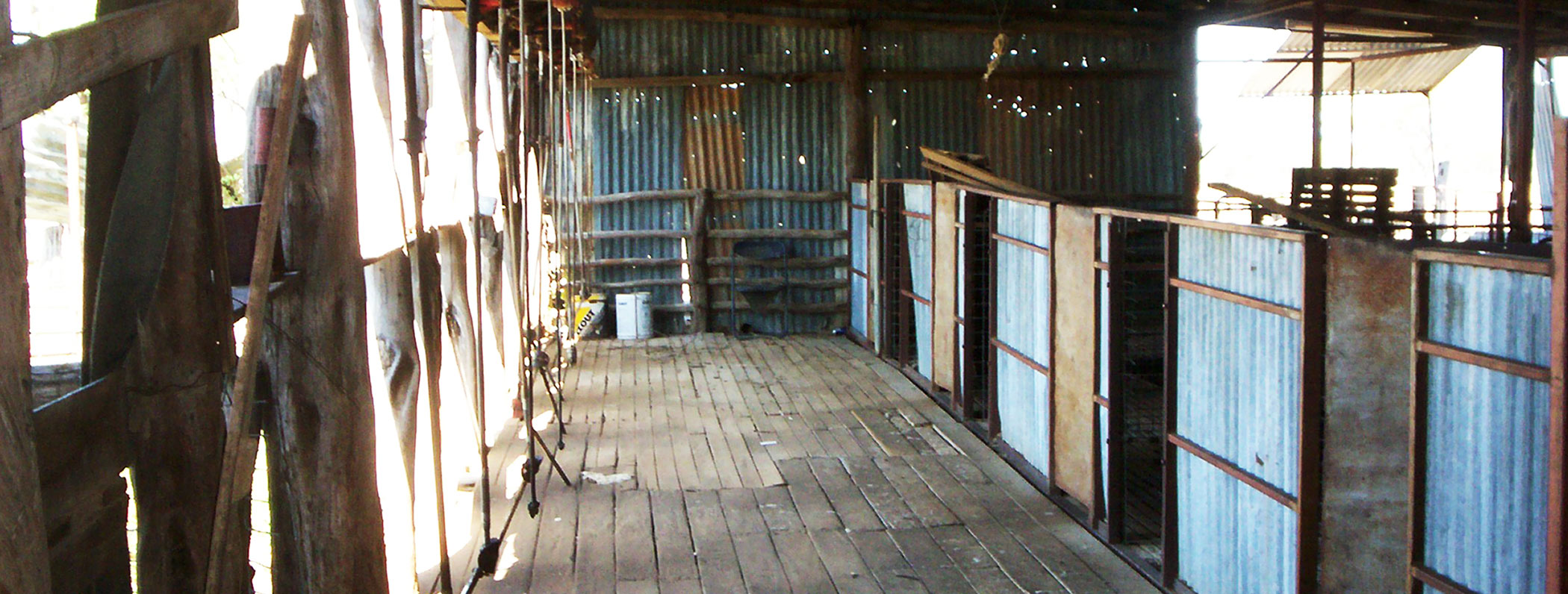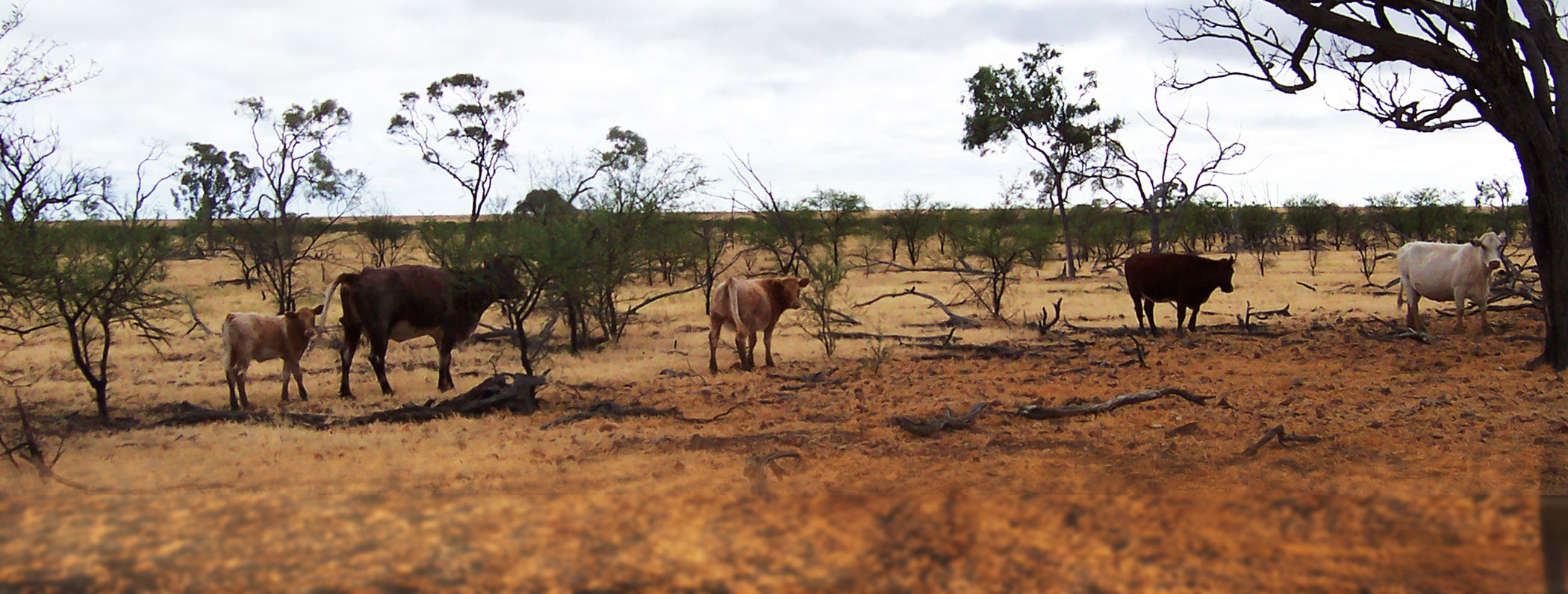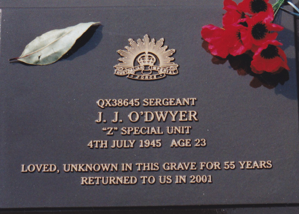Family History
Z Special Unit came into existence on 1 June 1942, the first Commando Unit in Australia.
The unit was created at the suggestion of the commander of Allied land forces in the South West
Pacific Area, General Thomas Blamey, and was modelled on the British Special Operations
Executive (SOE) in London. It was renamed Special Operations Australia or SOA and in 1943
became known as the Services Reconnaissance Department (SRD). In June 1942, an ISD
raiding/commando unit was organised and designated Z Special Unit.
This was the Unit that my father James Joseph O’Dwyer, was successsful in gaining admission to
and was also successful in completing the required training course. His part of the jungle warfare
training was carried out on Fraser Island a place not too far from where I live now on the Sunshine
Coast. A local man does occasional special tours of the Island to show remnents of the Training
School and Course, which now holds some historical interest.
The Z men, were trained in explosives, camouflage and silent killing behind enemy lines and some
carried cyanide pills in case of capture.
They are best known for a 3,000 km voyage on a daring 1943 raid called Operation Jaywick. The
men dyed their skin and wore sarongs to resemble Indonesian fisherman. Seven ships were sunk in
enemy-held Singapore Harbour, but a follow-up mission, Rimau, was sadly an abject failure with
all 23 participants killed.
The Unit is said to have carried out 284 missions in the Pacific, sneaking into places such as Timor
and New Guinea. By war’s end, 32 men from Z Unit were in Borneo, working in four areas against
30,000 enemy soldiers.
Sworn to secrecy, Z veterans were not allowed to tell anyone of their experiences until 1980.
Although some famous stories were indeed told before that date.
My Dad’s Mission was named Platypus VII one of a number of Platypus missions all targeted on
Borneo in 1945.
Both Platypus VI and Platypus VII’s missions were to be dispatched from Australia to Borneo on
30 June 1945 where both parties would be dropped by parachute in different locations behind
enemy lines, so they could radio back information to help with the Allied invasion of Balikipapan
planned for 1 July 1945.
Both Platypus Missions should have had their own aircraft but one had mechanical problems so
both missions were put into the one aircraft which was to cause major problems.
Platypus VI was commanded by a legend of a man Capt. “Jock” McLaren, who had already proven
to be invaluable as a coastwatcher and in skirmashes with the Japanese. During one period of his
service in the Philippines, McLaren commanded a 26-foot whaleboat called The Bastard, which he
launched against the Japanese in broad daylight, shot up supply vessels and piers with machine
guns, then turned tail and ran before the Japanes knew what had hit them. Jock had been specially
recruited for Z Special Unit.
I’m proud to know my Dad got to meet Jock and probably to know him. Jock had fought in
WWI, so was already in his forties during WWII. Jock and his men were dropped wide of their
target and their storpodeos (containing supplies and ammunition) mainly dropped where they were
very difficult to locate, but Jock managed to bring most of his men except one, back to the coast. I
think he had become very wily and used to jungle warfare as well as blessed with a bit more good
luck.
My Dad’s mission Platypus VII was headed by Flight Lt. Alan Martin. The object of the mission
was to carry out a reconnaissance of the area about 20 klms north of Balikipapan. The party was
dropped at 20.00 hrs on 30 June 1945, by a Liberator bomber piloted by W/C Reid. The dropping
of personnel and their storpedoes (containing ammunition & supplies) was described as “very
poorly executed” in a report after the war. The drop was made much later than planned and the
storpodeos were dropped so far away, that there was no possibility of ever retrieving them. F/Lt
Martin was unable to sight the Drop Zone (because he was already in the rear of the aircraft in
harness as ordered by the pilot he was unable to crawl forward to the bombardier’s compartment)
and the party were dropped almost on top of a Japanese encampment, with about 200 Japanese
soldiers there in preparation for the coming Allied invasion, instead of the usual 30.
Flt. Lt. Martin’s parachute became caught up in a very high tree. He said the last time he saw the
rest of his party, he watched their parachutes floating fairly close together, and never saw them
again. Flt. Lt. Martin was able to cut himself free but was wounded when he hit the ground from
the great height. Later as he made his painful way out, he heard gunfire over the next couple of days
and thought it was his men being killed. He did hear reports from natives that his men had been
captured and killed.
After the war the bodies of two Commondos were discovered, beheaded, while our Dad’s body was
not found.
In 2000, my brother decided to try to find out what he could about what had happened to the three
commandos. He wrote letters to Japan through interpreters and to Indonesia to see if anyone with
any knowledge of the area, or anyone who might have been there and was still alive could help in
any way.
He was lucky to find an elderly gentleman in Japan (in his 80s) who had been at the exact jungle
depot where our commandos had been dropped on 30 June 1945. This gentlemen was even there
when our Dad was killed and was able to draw a map and tell the interpreter what happened.
That’s how we discovered the men had landed exactly in the middle of the compound, one even
landed on the roof of one of the buildings. However they managed to fight their way out of the
compound and laid low for a day or so as they scouted the area trying to locate their storpedoes.
Their ammunition must have been running low because they decided to try to break into a well
secured outbuilding (that did contain Japanese ammunition) but were surprised in the attempt in the
early hours of the following morning and as they tried to escape our father was bayoneted in the
back a number of times and killed. The other two were captured with slight wounds and
consequently beheaded.
My brother and Alan Martin (former Flt.Lt. and Leader of Platypus VII and only survivor) then
went back to Borneo to retrace the Commandos’ old descent into the jungle and to try to locate
where our Dad’s remains could possibly be. After lots of investigations they were able to find out
that his remains had been in a jungle grave and were moved by the Japanese for some reason, then
overlooked by the first Australians sent to recover remains, and although discovered by the second
Australian War Dead search were not identified but marked as ‘Unknown’. Then his remains went
on a reinterrment roundabout. Relocated to Balikipapan, then to Tarakan, then to Sandakan and
finally to the Commonwealth War Cementery at Labaun. My brother’s research was able to finally
identify our Dad’s remains in Grave 5D5 marked Unknown.
To end this story. The Office of Australian War Graves was kind enough to allow my brother to
keep the old plaque marked ‘Known Unto God’ while our Dad’s bones are finally marked with a
plaque carrying his name. Sadly I wish we had been able to bring his bones home. Since all we
have in Australia is his name on the wall of the War Memorial in Canberra, similar to a lot of
families. It seems more caring and personal to be able to visit a grave in your own homeland.
In memory of Sgt. James Joseph O’Dwyer (my father)
Sig Ernest Henry Myers N. Z. (the youngest of the group)
L/Sgt Ma’eroff bin Said whose name is also shown as Ma’aruff bin Shalid in the War Memorial (both with same service number)
Written by JJ O’D’s daughter Maggie Stahnke
Relationship to the Muttaburra Township
Son of James & Eileen Patricia O’Dwyer
Husband of Betty and father of Margret and Micheal who both went to school in Muttaburra.
James O’Dwyer, former teacher - April 1940 until he enlisted- at Muttaburra who was Killed WWII.




